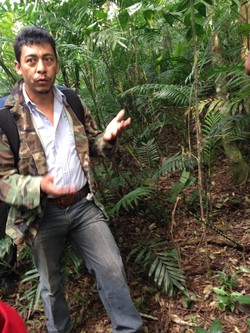It is estimated that nearly a thousand congregations across the country will be waving 1 million ecofriendly palm fronds as Holy Week observances begin this year. As churches of all denominations remember Christ’s arrival in Jerusalem, palm fronds will play a key role. But have you ever wondered where the fronds come from and how important they are to the people who harvest them?
In 2005, Lutheran World Relief and the University of Minnesota began offering congregations an opportunity to purchase palm fronds harvested in ways that support communities and protect forests. Catholic Relief Services and the Presbyterian Church (U.S.A.) later joined the initiative, dubbed Eco-Palms. The fronds come from communities in Mexico and Guatemala, and workers receive fair wages for practicing sustainable harvesting that protects the local ecosystem.
“There was a time when workers would strip the palms in the forests and leave nothing behind,” says Bryce Wiebe, mission associate with the Presbyterian Hunger Program. “Once the trees were stripped of the palm fronds, there was no plan to preserve or grow for future years.”
Working with nongovernmental organizations, the churches helped communities in these countries establish a system for harvesting the fronds while preparing for future growth.
“Now they have a set cycle for each palm tree. You can only pull a certain number of fronds from each tree,” Wiebe says. “Harvesters must mark the trees with a red tie once two fronds are removed, and no more can be taken, allowing the plants to continue growing.”
The Eco-Palms program protects forests and local jobs and provides sustainable livelihoods. With the work of various ecumenical partners, Wiebe estimates nearly $1 million is infused in participating communities. The ecofriendly fronds are purchased directly from the communities at five to six times the normal payment, which provides a stable source of income for families. The annual Palm Sunday premium has provided scholarships for elementary school children who would not otherwise have attended school and has helped young women to attend college. It has also provided jobs that did not exist previously for women in the communities.
Wiebe estimates more than 300 million palm fronds are harvested each year for U.S. consumption alone. Last year, 974 Presbyterian congregations participated in the Eco-Palms program.
Visit the Eco-Palms website for more information.

